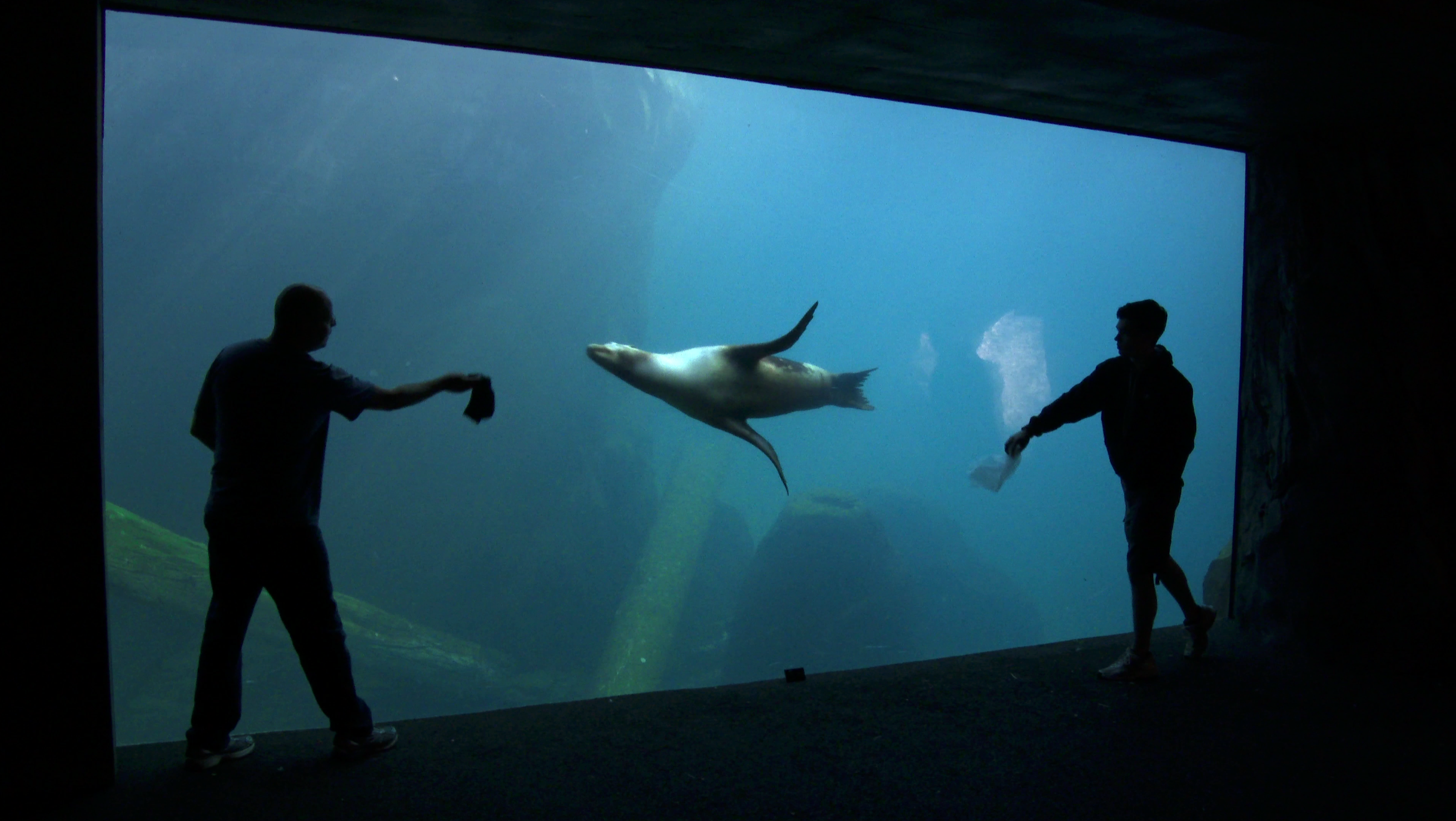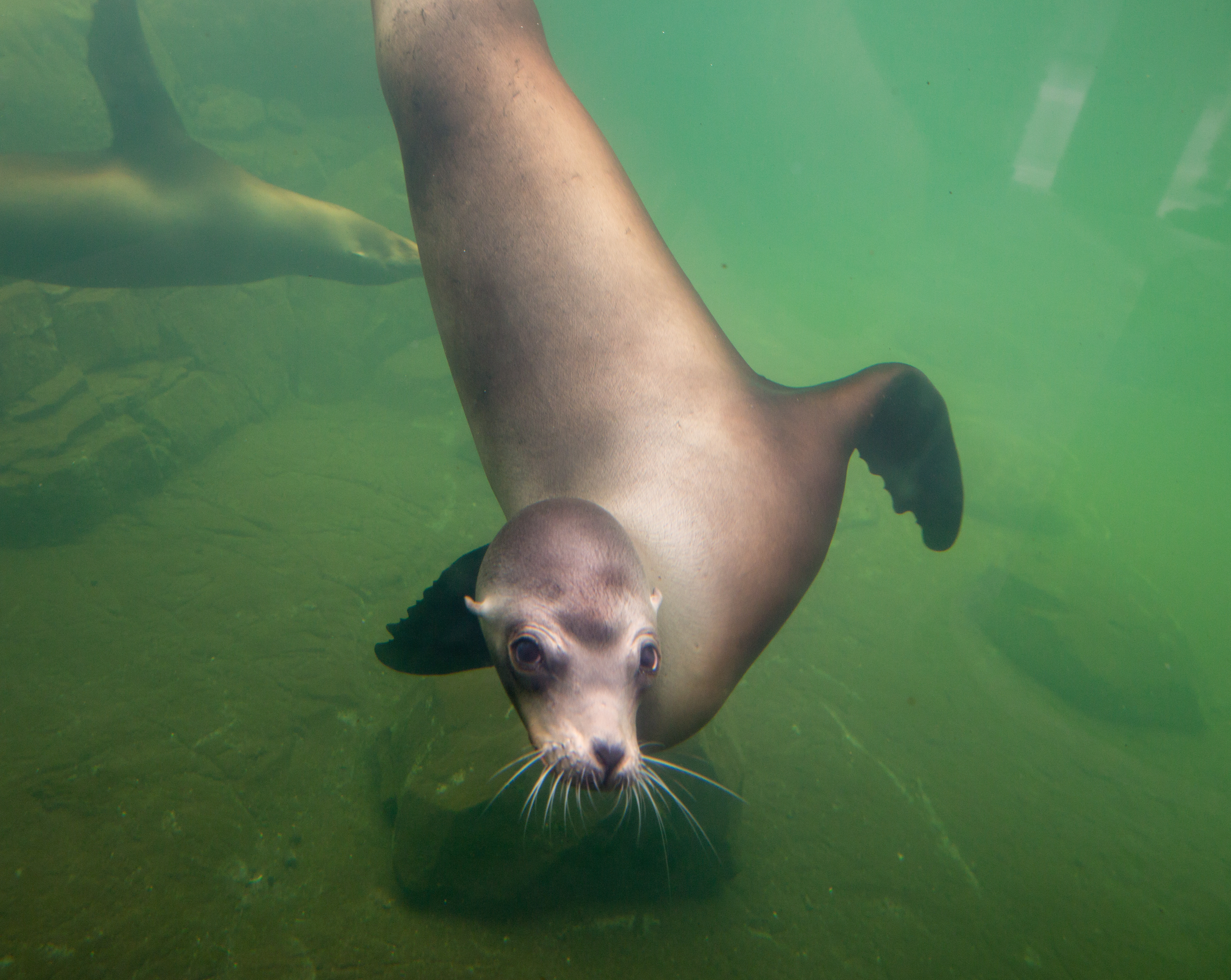Sea lions glide through the ocean with amazing grace. Not only are they fast swimmers— reaching speeds of 25 miles per hour—but they also are capable of extraordinary maneuvers. These playful animals back flip and spin with ease, like ballerinas of the sea.
In Professor Megan Leftwich’s lab, she and her team of researchers work in a field called fluid dynamics, the study of how objects and animals travel through liquids, gasses and plasmas in order to explain phenomena of the natural world.
Sea lions immediately piqued her interest because they move through the water unlike any other animals on Earth. While fish and other swimming mammals thrust forward with their tails or caudal fins, sea lions rely on their fore flippers, which are analogous to human arms, for underwater movement. They sweep downward, clap their large flippers into their bodies and glide forward, producing jet propulsion. Sea lions are able to cruise the length of an Olympic-size pool with a single clap. Other animals that use jets to propel forward, like octopi and squid, cannot sustain high speeds or manipulate their bodies with the sea lions’ impressive agility. Sea lions’ hardly traceable wake structure—the disturbance a solid causes in a fluid—also differs significantly from other swimming mammals.
As part of an ongoing research partnership, Prof. Leftwich and her team visited the National Zoo’s California sea lions, using high-definition video cameras to digitize their unique flipper motions. After analyzing the videos, Prof. Leftwich and post-doctoral scientist Chen Friedman quantitatively compared differences in the sea lions’ claps and body maneuvers in order to highlight correlations in features such as angular velocity and flipper curvature.
When one of the zoo’s sea lions died last year, Prof. Leftwich’s lab obtained her flipper. Josh Waldron, one of six undergraduates working in Prof. Leftwich lab, spent the summer taking high-resolution, micro-scale images of the flipper’s skin using a high-powered scanning electron microscope.
For future studies, Prof. Leftwich hopes to collaborate with the SLEWTHS program (Science Learning and Exploration With the Help of Sea Lions) based in California, where her team would be able to experiment directly with the animals in their natural habitats. One potential application for Prof. Leftwich’s research is to provide models for underwater vehicles, such as the autonomous ones used by the Navy for disarming underwater bombs.



